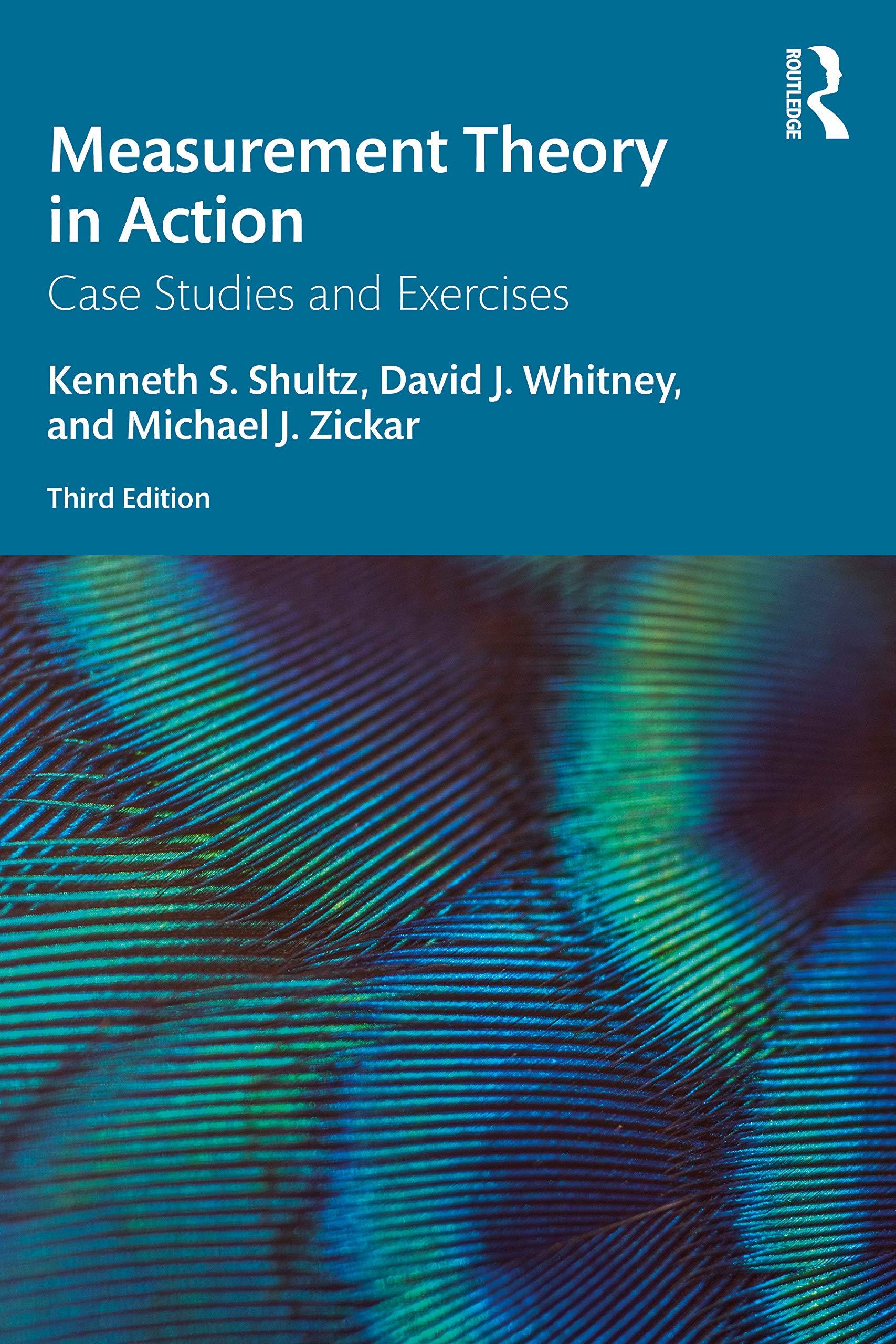I knew this topic wasnt any good, but none of you listened to me, did you? asked
Question:
“I knew this topic wasn’t any good, but none of you listened to me, did you?” asked Doug, half in jest.
He and four other students in his graduate test construction seminar had recently begun working on a semester-long test construction project. Their assignment was to select a psychological trait, clearly define the domain, write items, and then conduct the usual steps for rational test development. Unfortunately, the semester was passing by quickly, and the students had just now begun to define the trait they had selected. Today, the group had decided to meet to hammer out a definition of the construct. Even so, there obviously remained some dissension as to whether the selected trait was really worth measuring at all.
“What sort of trait is joinership anyway?” continued Doug.
“You know, I really like the idea of this construct,” retorted Kandice. “It seems to me that some people are more likely to join a lot of community groups and organizations, whereas others are never willing to join such organizations. As far as I know, there is no other scale intended to distinguish between these sorts of people.” Although she enjoyed this friendly bickering, Sangeeta was determined to get down to business. “Does anyone have any ideas as to how we should define the construct?”
Kristin had been waiting for this opportunity. “How about ‘The number of groups a person joins’?”
“That’s not bad,” said Akira, “but does that mean we’ll just measure how many groups a person is a member of? We could measure that with a single self-report item.”
“No,” protested Kristin, “I meant that we’d view the construct as a trait... more like someone’s propensity for joining multiple groups.”
“Would that mean that we are just interested in whether people join organizations? Or should we also measure their actual level of involvement in those organizations that they do join?” asked Akira. Doug smiled. “Sorry, folks, but I see another problem. Without specifically saying so, I think we all have been thinking about the groups we’re referring to as sort of social clubs and community organizations that generally have positive connotations. Are we also interested in a person’s propensity for joining negative groups like gangs and cults?”
Sangeeta was ready to add her thoughts. “That’s good, Doug, but maybe that’s part of the dimensionality of the construct that we haven’t talked about yet. Maybe there are different factors that would influence an individual to be attracted to different types of community groups. For example, maybe there exist different tendencies for people to join social groups versus religious groups versus violent groups.” Seeing an opening, Kandice jumped in, “You know, I did a little research last night in preparation for our meeting. I found a theory by Forsyth (1998) of why people join groups. According to Forsyth, people join groups to meet one of five functional needs, namely, Belongingness, Intimacy and Support, Generativity, Influence, and Exploration.”
“Oh my,” said Akira, obviously impressed. “Those needs sound like the dimensions of joinership we’ve been searching for. Wouldn’t it make sense for us to write items that assess an individual’s desire to join groups to satisfy those needs?”
“You bet,” added Kristin. “And how’s this for a formal definition? ‘An individual’s propensity to join multiple groups in order to satisfy each of Forsyth’s (1998) needs.’”
“I think we’re on to something big,” said Sangeeta. “Finally,” added Doug.
Questions
1. What special challenges might there be for defining a newly conceptualized construct such as joinership?
2. How would measurement of a personality trait differ from self reported behavior? What implications would this have for the development of the scale?
3. A thorough test specification would likely discuss constructs that were similar, but distinct, from the construct assessed by the measure. What constructs might be used to compare and contrast joinership?
4. How important is it to define the context in which the scale is to be used? For what purposes could the joinership scale be used?
5. Explain how theory provided assistance in the development of the joinership scale. What role should theory play in the development of a psychological measure?
6. Now that the group has decided on the dimensionality of the construct, how should item writing proceed?
Step by Step Answer:

Measurement Theory In Action
ISBN: 9780367192181
3rd Edition
Authors: Kenneth S Shultz, David Whitney, Michael J Zickar





